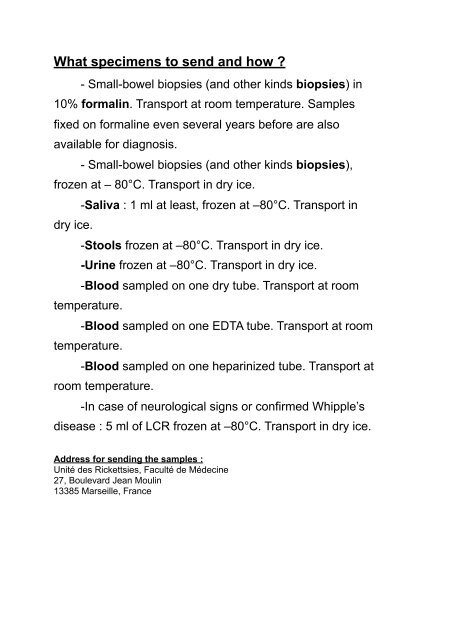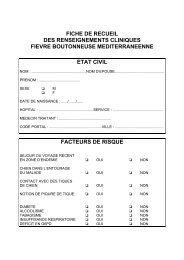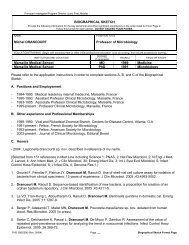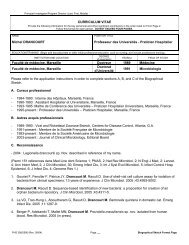Whipple's disease and Tropheryma whipplei
Whipple's disease and Tropheryma whipplei
Whipple's disease and Tropheryma whipplei
Create successful ePaper yourself
Turn your PDF publications into a flip-book with our unique Google optimized e-Paper software.
What specimens to send <strong>and</strong> how ?<br />
- Small-bowel biopsies (<strong>and</strong> other kinds biopsies) in<br />
10% formalin. Transport at room temperature. Samples<br />
fixed on formaline even several years before are also<br />
available for diagnosis.<br />
- Small-bowel biopsies (<strong>and</strong> other kinds biopsies),<br />
frozen at – 80°C. Transport in dry ice.<br />
-Saliva : 1 ml at least, frozen at –80°C. Transport in<br />
dry ice.<br />
-Stools frozen at –80°C. Transport in dry ice.<br />
-Urine frozen at –80°C. Transport in dry ice.<br />
-Blood sampled on one dry tube. Transport at room<br />
temperature.<br />
-Blood sampled on one EDTA tube. Transport at room<br />
temperature.<br />
-Blood sampled on one heparinized tube. Transport at<br />
room temperature.<br />
-In case of neurological signs or confirmed Whipple’s<br />
<strong>disease</strong> : 5 ml of LCR frozen at –80°C. Transport in dry ice.<br />
Address for sending the samples :<br />
Unité des Rickettsies, Faculté de Médecine<br />
27, Boulevard Jean Moulin<br />
13385 Marseille, France
















